Appendix A to Part 698 - Model Forms for Risk-Based Pricing and Credit Score Disclosure Exception Notices
16:1.0.1.6.80.0.39.4.58 : Appendix A
Appendix A to Part 698 - Model Forms for Risk-Based Pricing and
Credit Score Disclosure Exception Notices
1. This appendix contains four model forms for risk-based
pricing notices and three model forms for use in connection with
the credit score disclosure exceptions. Each of the model forms is
designated for use in a particular set of circumstances as
indicated by the title of that model form.
2. Model form A-1 is for use in complying with the general
risk-based pricing notice requirements in § 640.3 if a credit score
is not used in setting the material terms of credit. Model form A-2
is for risk-based pricing notices given in connection with account
review if a credit score is not used in increasing the annual
percentage rate. Model form A-3 is for use in connection with the
credit score disclosure exception for loans secured by residential
real property. Model form A-4 is for use in connection with the
credit score disclosure exception for loans that are not secured by
residential real property. Model form A-5 is for use in connection
with the credit score disclosure exception when no credit score is
available for a consumer. Model form A-6 is for use in complying
with the general risk-based pricing notice requirements in § 640.3
if a credit score is used in setting the material terms of credit.
Model form A-7 is for risk-based pricing notices given in
connection with account review if a credit score is used in
increasing the annual percentage rate. All forms contained in this
appendix are models; their use is optional.
3. A person may change the forms by rearranging the format or by
making technical modifications to the language of the forms, in
each case without modifying the substance of the disclosures. Any
such rearrangement or modification of the language of the model
forms may not be so extensive as to materially affect the
substance, clarity, comprehensibility, or meaningful sequence of
the forms. Persons making revisions with that effect will lose the
benefit of the safe harbor for appropriate use of the model forms
in this appendix. A person is not required to conduct consumer
testing when rearranging the format of the model forms.
a. Acceptable changes include, for example:
i. Corrections or updates to telephone numbers, mailing
addresses, or website addresses that may change over time.
ii. The addition of graphics or icons, such as the person's
corporate logo.
iii. Alteration of the shading or color contained in the model
forms.
iv. Use of a different form of graphical presentation to depict
the distribution of credit scores.
v. Substitution of the words “credit” and “creditor” or
“finance” and “finance company” for the terms “loan” and
“lender.”
vi. Including pre-printed lists of the sources of consumer
reports or consumer reporting agencies in a “check-the-box”
format.
vii. Including the name of the consumer, transaction
identification numbers, a date, and other information that will
assist in identifying the transaction to which the form
pertains.
viii. Including the name of an agent, such as an auto dealer or
other party, when providing the “Name of the Entity Providing the
Notice.”
b. Unacceptable changes include, for example:
i. Providing model forms on register receipts or interspersed
with other disclosures.
ii. Eliminating empty lines and extra spaces between sentences
within the same section.
4. Optional language in model forms A-6 and A-7 may be used to
direct the consumer to the entity (which may be a consumer
reporting agency or the creditor itself, for a proprietary score
that meets the definition of a credit score) that provided the
credit score for any questions about the credit score, along with
the entity's contact information. Creditors may use or not use the
additional language without losing the safe harbor, since the
language is optional.
A-1 Model form for risk-based pricing notice.
A-2 Model form for account review risk-based pricing notice.
A-3 Model form for credit score disclosure exception for loans
secured by one to four units of residential real property.
A-4 Model form for credit score disclosure exception for loans
not secured by residential real property.
A-5 Model form for credit score disclosure exception for loans
where credit score is not available.
A-6 Model form for risk-based pricing notice with credit score
information.
A-7 Model form for account review risk-based pricing notice with
credit score information.
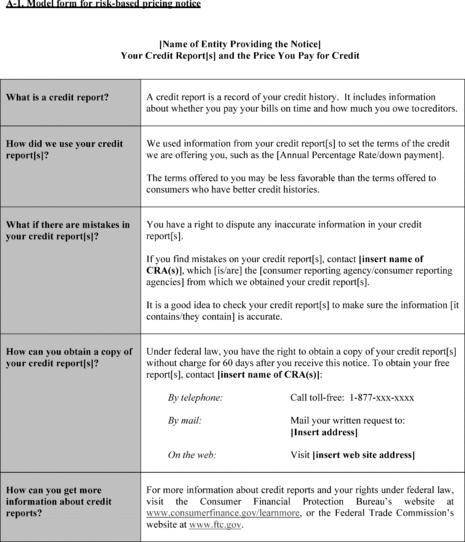
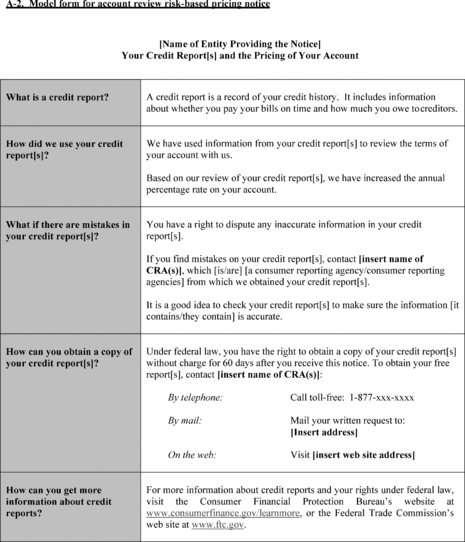


Notice to the Home
Loan Applicant
In connection with your application for a home loan, the lender
must disclose to you the score that a consumer reporting agency
distributed to users and the lender used in connection with your
home loan, and the key factors affecting your credit scores.
The credit score is a computer generated summary calculated at
the time of the request and based on information that a consumer
reporting agency or lender has on file. The scores are based on
data about your credit history and payment patterns. Credit scores
are important because they are used to assist the lender in
determining whether you will obtain a loan. They may also be used
to determine what interest rate you may be offered on the mortgage.
Credit scores can change over time, depending on your conduct, how
your credit history and payment patterns change, and how credit
scoring technologies change.
Because the score is based on information in your credit
history, it is very important that you review the credit-related
information that is being furnished to make sure it is accurate.
Credit records may vary from one company to another.
If you have questions about your credit score or the credit
information that is furnished to you, contact the consumer
reporting agency at the address and telephone number provided with
this notice, or contact the lender, if the lender developed or
generated the credit score. The consumer reporting agency plays no
part in the decision to take any action on the loan application and
is unable to provide you with specific reasons for the decision on
a loan application.
If you have questions concerning the terms of the loan, contact
the lender.
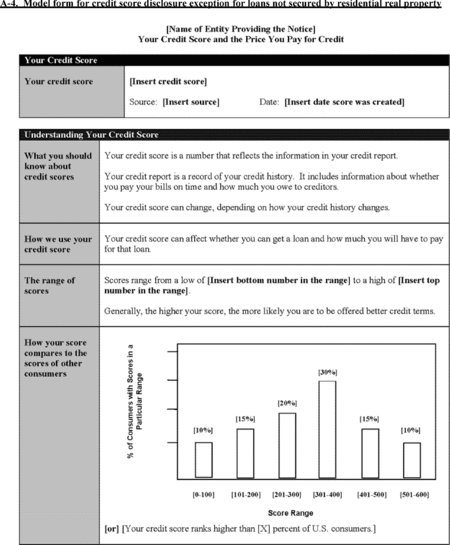
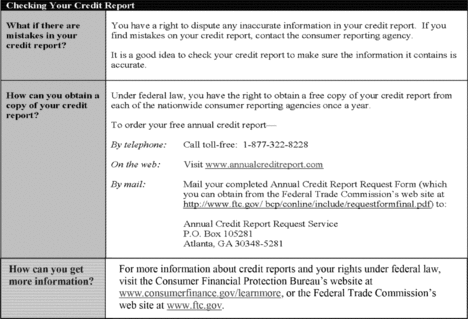
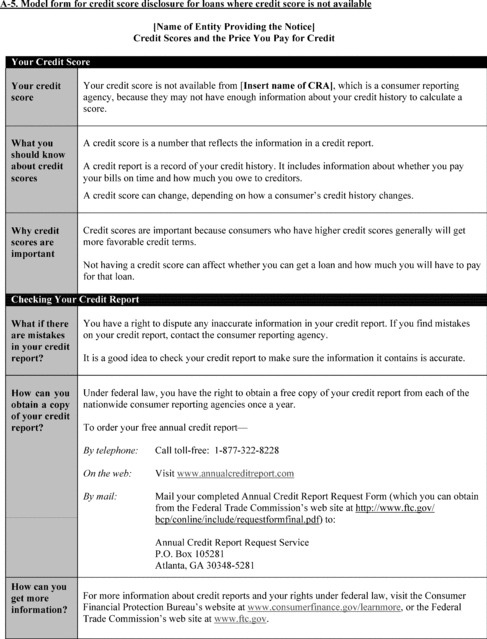
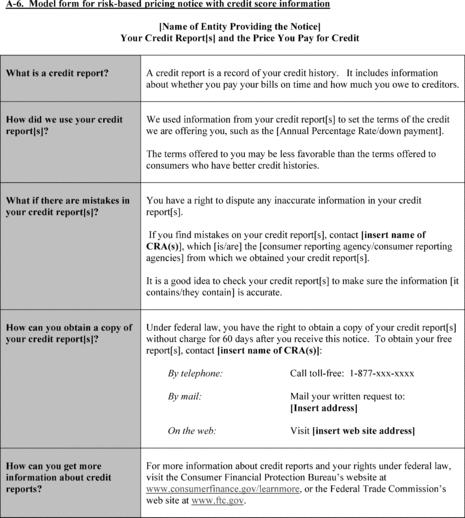
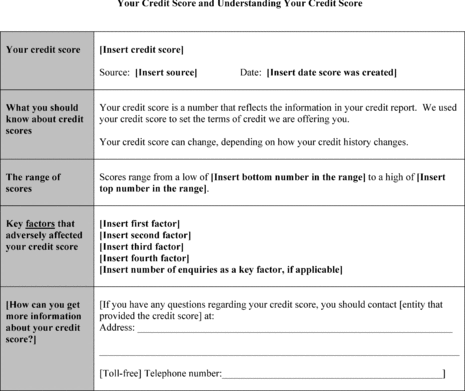
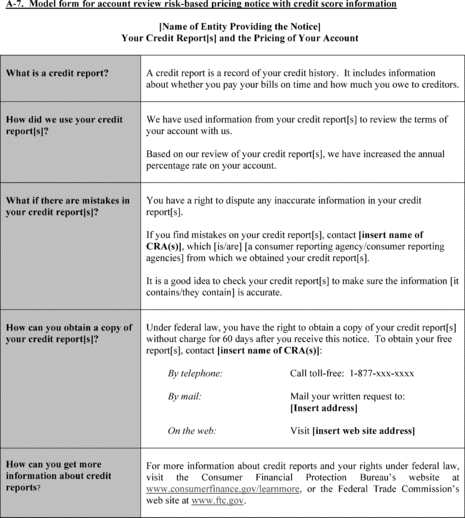
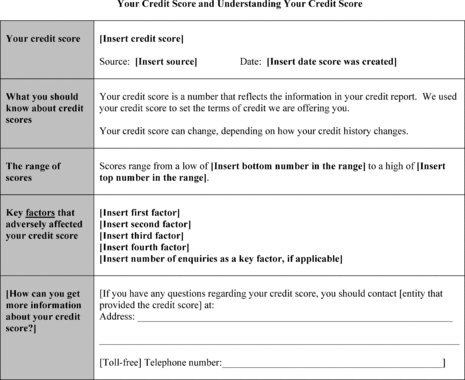
[84 FR 23473, May
22, 2019]